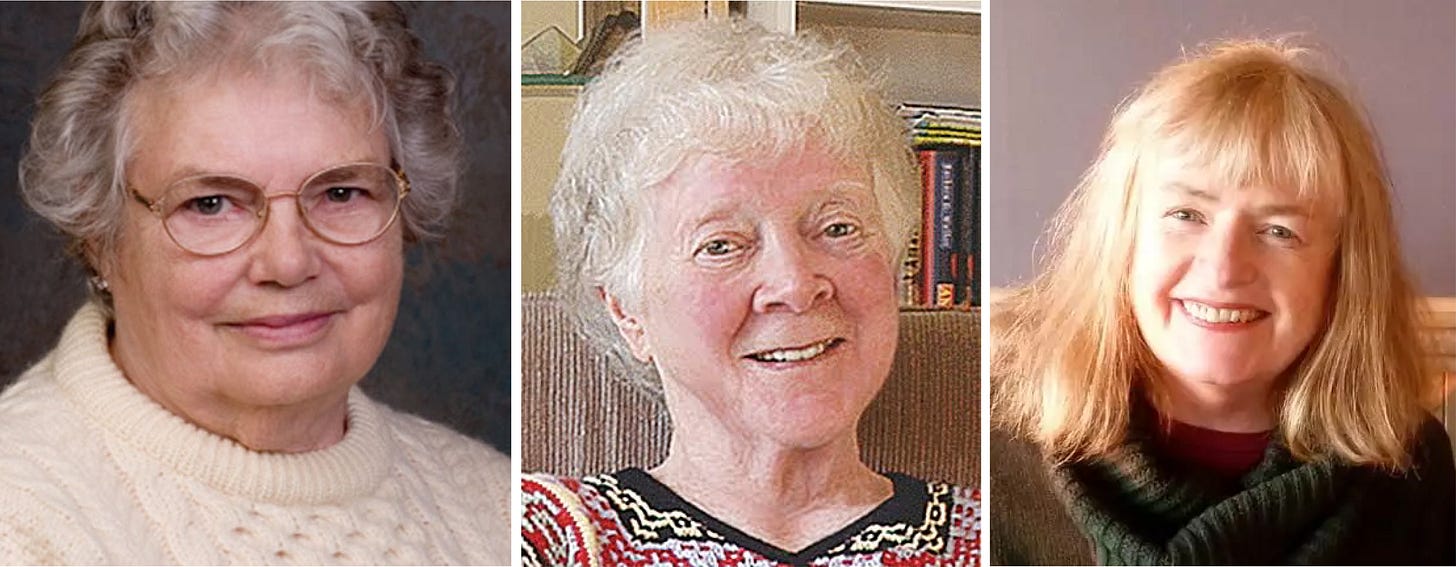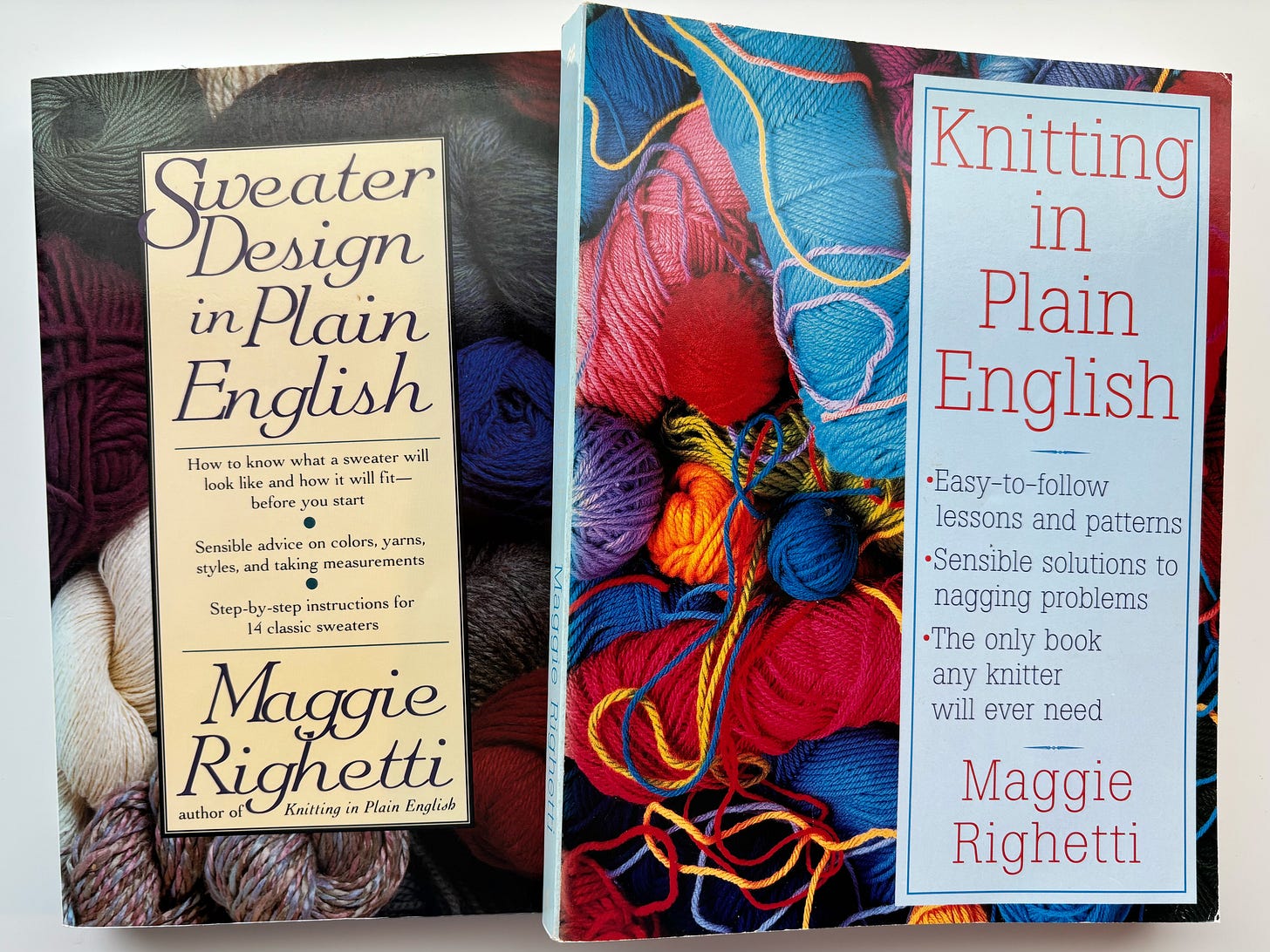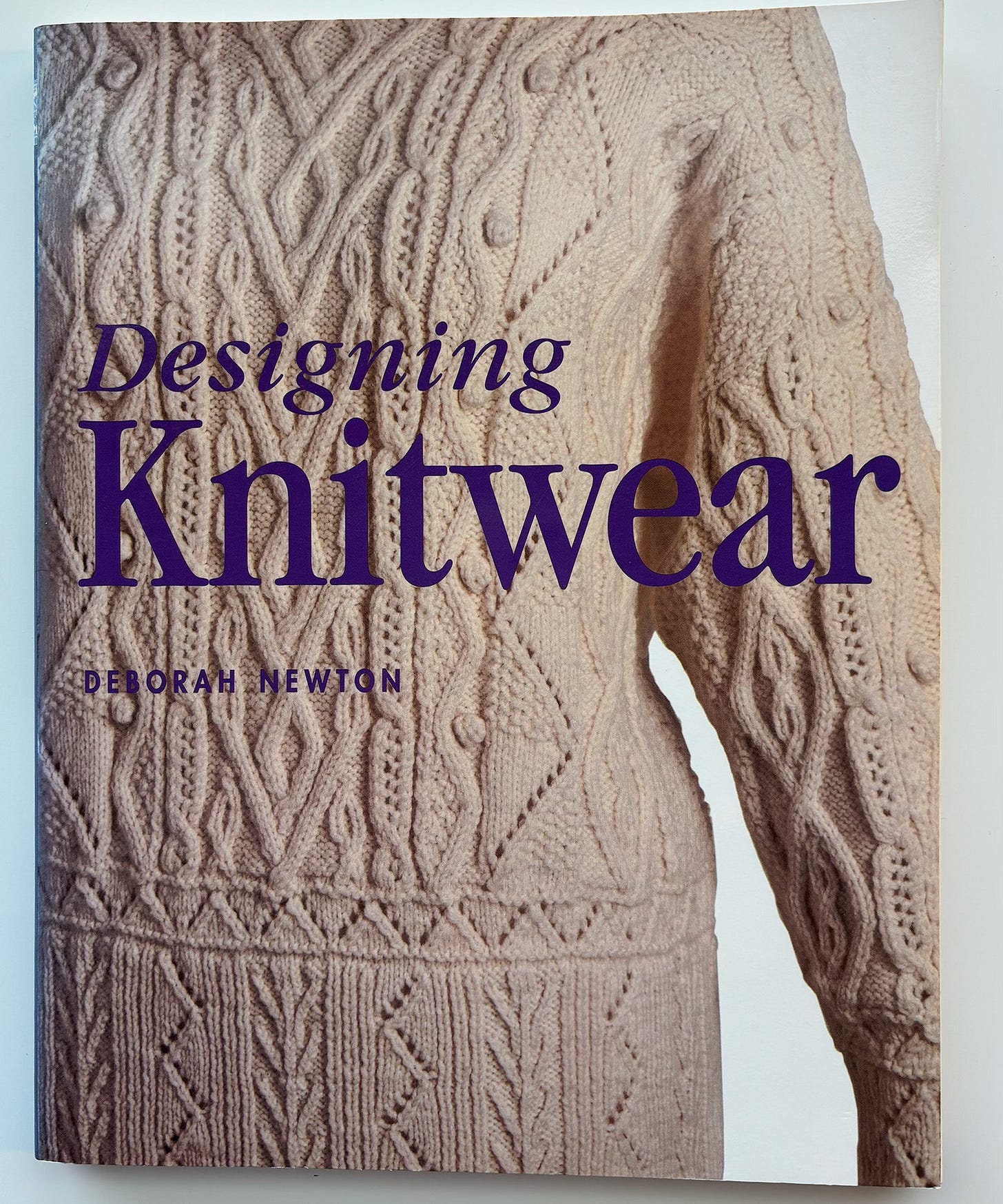I did not grow up surrounded by knitters. My mother is from Panama which, like most tropical countries, has more of a crochet culture. Crochet was popular when I was growing up (the 1960s and 70s), and I was right in style with the crocheted poncho my mother made for me.
Knitting came into my life through magazines. Fifty years ago, the checkout aisle at every grocery store was stocked with "women's magazines" like Family Circle, Woman's Day, and Good Housekeeping. These magazines would regularly publish special issues dedicated to crafts, with full instructions for a wide variety of projects. I picked up one of these magazines, saw a brown-striped knit pullover vest, and decided "I'm going to make that." Make it I did, referring to the "How to Knit" instructions and diagrams in the back of the magazine.
Having come of age before the internet and video-on-demand, I have always learned from books.
March is Women's History Month in the US (authorized by Congress in 1987 and proclaimed by the President annually since 1995). For me, knitting history is women's history. Of course, men do knit, and there are many men who have made valuable contributions to the craft. But over the past century, women have been the primary keepers of the knitting flame and the conveyors of knitting knowledge.
When I think about my knitting mentors, I think about the women who authored the books that were the foundational texts of my knitting education. Here are those women and those books…
Maggie Righetti (1931–2015)
I never had the opportunity to meet Maggie Righetti, but her books made me a confident knitter. Knitting in Plain English (St. Martin's Press, 1986) taught me how to think about knitting. Sweater Design in Plain English (St Martin's Press, 1990—now out of print) gave me permission to make what I wanted to make, even if I couldn't find a pattern that matched my vision.
Righetti's magic lay in her down-to-earth encouragement. Reading her is like having a funny, wise, older friend looking over your shoulder while you knit. The first chapter of Knitting in Plain English is entitled "You Can Always Tell What's Wrong With the Garment by the Way the Model is Posed, or Slender Five-Foot-Ten-Inch-Tall Models Can Look Good in Anything."
Barbara G. Walker
Barbara Walker's treasuries of knitting stitch patterns are indispensable source materials for most knitting designers, together documenting over a thousand knitting stitch patterns. She coined the term "mosaic knitting" and popularized the idea of knitting garments in the round from the top down, rather than in pieces from the bottom up.
When I was in my 20s, I spent an entire summer with A Treasury of Knitting Patterns (Charles Scribner's Sons, 1968), knitting swatches of any pattern that caught my eye. That exercise taught me how knitting works, how increases and decreases interact, and how stitches stack on top of one another to create different textures.
I remember admiring Deborah Newton's designs in Vogue Knitting Magazine. They were always interesting, often intricate, but never intimidating. When I came across her book Designing Knitwear (The Taunton Press, 1998), I happily pulled out my wallet.
Newton's book demystifies designing. She presents a simple, but thorough, roadmap for moving from idea to finished sweater. Her method of exploring yarns by swatching informs my own approach to this day.
I had the pleasure of meeting Deborah at Vogue Knitting Live eight or nine years ago. I was completely star-struck. She was gracious and kind.
Who are/were your knitting mentors? Let's celebrate them together! Whether it's the grandmother who patiently guided you through your first doll blanket, or an author you've never met, tell us about her in the comments.
Things that caught my eye…
The annual Knit for Food Knit-a-Thon is coming up on April 5, 2025. Founded by Laura Nelkin in 2021, this Zoom event gathers knitters from around the world to raise money for four worthy organizations: Feeding America, World Central Kitchen, No Kid Hungry, and Meals on Wheels. In the past four years, over $1.25 million has been raised and divided equally between the beneficiary organizations.
Laura always arranges a fun program for the event. I've participated in the past, but I have a schedule conflict this year, so I'll have to skip it.
If you are going to participate in the Knit-a-Thon this year, put a link to your donation page in the comments and I'll add to your pledges.
As always, thank you for your time and attention.
I'm looking forward to reading about your knitting mentors in the comments. Who are the women who have inspired you, encouraged you, made you a better knitter?









Barbara G. Walker is my absolute favorite!! She will be celebrating her 95th birthday on July 3, 2025. What a treasure she is in so many ways. She has written over 25 books, including knitting books and books dealing with women's issues.
There are so many knitters who have influenced my knitting over the years. Marilyn van Keppel who translated the Faroese Knitted Shawls book; Margaret Stove of New Zealand who is a fabulous spinner, knitting designer and lace knitting teacher; Sharon Miller of Heirloom Knitting who is an absolute expert in Shetland lace knitting; Christine Duchrow of Germany who was one of the very first to use charts in publishing lace designs; Annie Modesitt and her "Confessions of a Knitting Heretic" who was great at encouraging knitters to knit the way that best works best for the knitter; Cat Bordhi who so encouraged designers to self publish and knitters to try so many different things . . . so many, many more I could go on and on.
Barbara G Walker is the first person who comes to mind in answering this question - but also my neighbor Judy who taught me how to knit as a child, Nancy, who didn't laugh when I knitted every stitch of a sock through the back, resulting in a toe that was perpendicular to the heel (I thought I was doing it right!), and Lucy Neatby, whose Craftsy class on double-knitting was the only teaching that truly helped me understand why double knitting actually works, and isn't just magic.